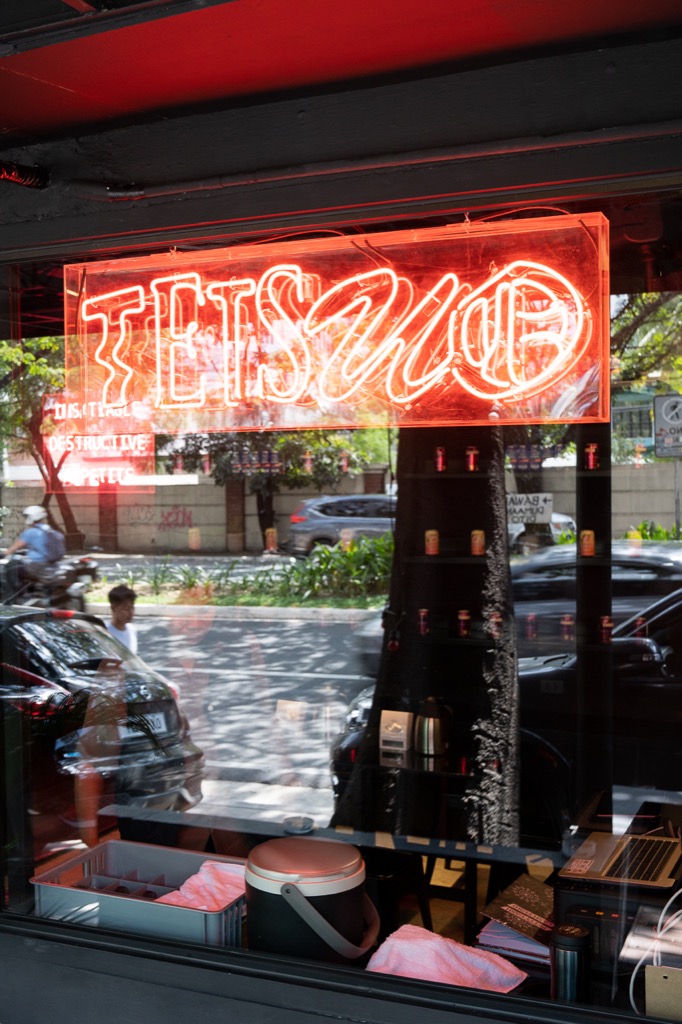The way we react when we eat spicy food is a product of bodily confusion. When, for example, we intake something seasoned with pepper, our brains are being told that it is hot (temperature-wise) but not actually spicy—short of telling us that our tongue is being set on fire. What we really experience mostly is a bodily feeling similar to when we touch something close to the boiling point of water. Simply put: There is nothing “hot” about spicy food.
The hottest pepper in the world was originally grown in a greenhouse in South Carolina. It’s called the Carolina Reaper, a stout red species with wrinkly skin that packs 30 times the heat of our local siling labuyo (that‘s approximately 1.5 million heat units on the Scoville scale).
Its breeder Ed Currie describes the sensation of tasting the hottest pepper as initially sweet. “You go, wow, that wasn’t so bad. And then immediately, that vast amount of capsaicin [the active ingredient in peppers] takes over, and it’s kind of like eating molten lava. That’s the best way to put it,” he says.
From one hip neighborhood to another


Tetsuo a hip, neon-lit space in Katipunan, Quezon City for all its edginess and street credibility (I mean, they sell streetwear and merch) is known for its mellow East Asian-inspired menu. This consists of torched salmon bowls, pork mantou buns, soba and what our staff writer previously recommended: fried mantou ice cream bun. Pretty mellow, right?
[READ: You’ve got to try TETSUO’s fried mantou ice cream buns]
But it would be a great disservice to neglect to mention Tetsuo’s crowd-pleaser: the customizable fried chicken which comes with a serving of rice sprinkled with nori and a buttery gravy, a hit among frenzied Ateneo undergraduates who could muster the energy to go past Regis
By customizable—as many advertised customizable products are out there—it simply means you are given few illusory options: two or three pieces of chicken and a choice of spice from three different levels: sansho, a tangy, lemony homemade blend of spices that gets its kick from strong black pepper; ichimi, made with Togarashi (a relatively mild Japanese spice); and kaneda, another homemade blend with a smoky and slightly tangy taste—and the spiciest option available.
I personally prefer the milder spice levels (somewhere between the sansho and the ichimi) every time I am in that area, subtracting the times when I order just soba and karaage or pork buns. So I was pretty “psyched” (to use the kids’ vernacular these days) to learn that they are opening a branch near our office in Makati and in Poblacion, no less, undoubtedly the hippiest neighborhood of it all.
The same visual branding is true for its new store: the blank walls, black everything and neon signs. Situated below Boogie (another hip-and-happening establishment), the renovations of what used to be an extension of the bar took little time, soft opening on Jan. 31.
Sean Bautista and Timothy Jacob, two of four founding friends behind Tetsuo said it was natural for them to move to the south, where both of them reside. “We’ve been doing pop-ups for a long time at XX XX, which the Ongs (who owns Boogie) owns, so when they offered us the space we said ‘yes’ right then and there,” Jacob said.
Noticeably absent though are the dishes I was looking forward to: the mantou buns especially, both the ice cream and pork buns. Its founders said that for this branch they instead want to focus on adapting to the Poblacion crowd, which is more about drinking thus the wall of Suntory flavored beer and sake.
Exclusive to Tetsuo Poblacion are new dishes like a selection of beef entrées, tuna tartare, chicken sandwich (a substitute to the pork mantou buns) and the unassuming “hot chicken,” two pieces of buttermilk brine-based fried chicken with the usual accouterments as their signature chicken.
Unlike their signature chicken though, this one is seasoned with a predetermined spice level: death. Am I kidding? No. Because it was, in fact, covered in a Carolina Reaper spice blend. *Dun dun dun*
“A bad gauge”
I would have to agree with breeder Cullie on his description of its sensation. The first bite was rather mild as the seasoning was just concentrated on the skin, even fruity. The blow doesn’t hit you until 10 seconds when your mouth begins to fill with a burning feeling that you have no way of responding to except though excessive coughing.
Though we were well aware that drinking water will further intensify the heat, we grabbed on to the nearest glass. But like true troopers, no less human, we found ourselves taking another bite.
Call it a misjudgment no more than it is built-in human frailty. One expert has a theory on why despite the debilitating pain of consuming spicy things, we are drawn to such, and it is something he calls “benign masochism.”
After doing a progressive spicy tasting test, a set of respondents were asked what level of heat they liked the best, “they chose the highest level they could stand, “just below the level of unbearable pain.” As Delbert McClinton sings (about a different line of research), “It felt so good to hurt so bad.”
Jacob and Bautista will be the first to say attest to this. Having just discovered a local breeder that lead them to formulate this dish with their partner Wesley Chan, they acknowledge, however, that given their high heat tolerance, they might be a “bad gauge.”
Get more stories like this by subscribing to our weekly newsletter here.
Read more:
The Grid’s new Chinese stall has fried pigeon on its menu
Fireside by Kettle’s chicken and sandwiches make a long day at work better
We tried a boneless chicken feet cracker—here’s our verdict

